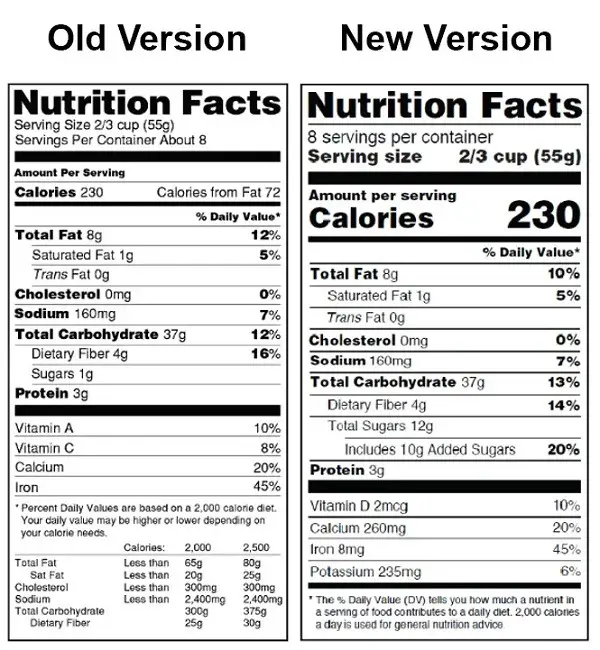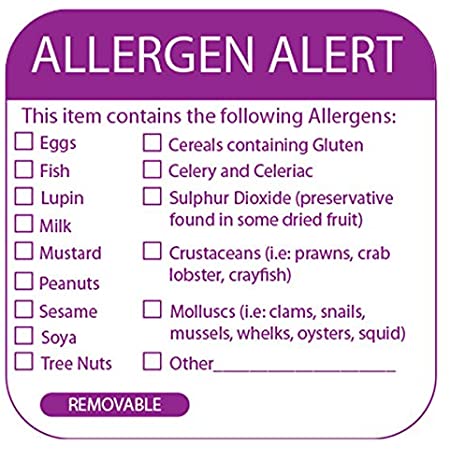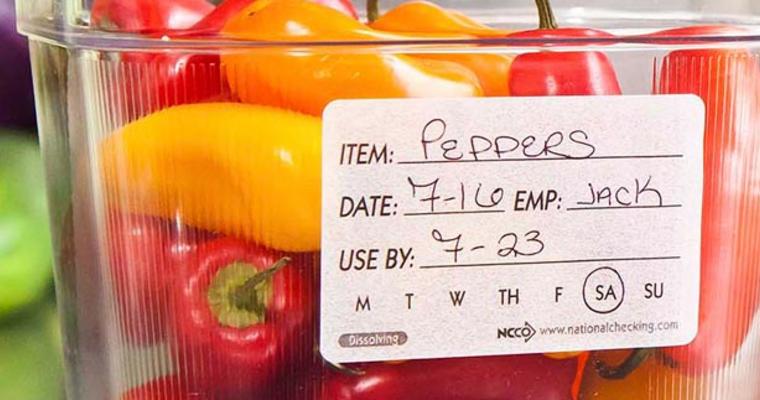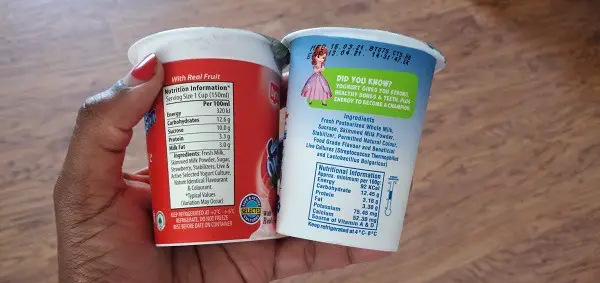Why do you need food labels?
There is a broad spectrum of ways to ensure you eat healthily. One way is by reading informative books and videos that show you the right foodstuff to take.
However, at times, it could be hard to put all these healthy eating tips into action. But are you aware that labeling your food items go a long way in helping you consume a healthy diet?
Health experts confirm that understanding the nutrition facts food labels can held you make healthier food choices.
A simple starting point is by reading the labels of food items that you buy which come with professionally done labels. This will also guide you into how you should do your home labels.
You can always include the nutritional value of all food items so that you monitor your intake of calories.
Additionally, you can indicate the percentage of various nutrients in your food items so as to ensure you are taking the recommended daily allowance.
Types and uses of food labels
The amount of detail that goes into your food labels will vary depending on the goals you wish to achieve with food labeling and whether your labels are purely for domestic use or commercial use.
For manufactured products, product labeling in most countries is governed by various laws and regulations that stipulate the minimum amount of information that should be contained in food labels.
If you are a manufacturer and doing labels for commercial purposes, make sure you familiarize yourself with the laws that govern food labeling in your respective State or Country.
The topic of laws on labeling is beyond the scope of this article since the article will provide general tips for food labeling for both domestic and commercial use.

Different labels for different categories of users
For people who are aiming at weight loss or are keen to increase the consumption of certain nutrients, detailed labels including calorie and nutrient contents will be necessary.
For those who want to label food for easy identification or to ensure consumption of the food before the expiration date, a simple label with the food item and dates may be sufficient.
So, depending on the category that you fall into, you can pick and choose the level of detail that you want to include in your food labels.
As a minimum, all food labels should contain the name of the food item and dates of manufacture or preparation and recommended consumption deadline date.
What are the right tips for food labeling?
Below are some simple steps that will start you off in the right direction on food labeling at home:
Include the name and a small description of the item
It is essential to include the name of the foodstuff. This way, you can identify the items on your kitchen counter or refrigerator easily. Moreover, putting a name label on your container helps you avoid confusion.
While doing this, you can put a short description of the product. It helps everyone know what the product is and pick the right products.
Also, if you stay with a lot of family members, name labels on your foodstuff are essential. But ensure you put the correct label.
Otherwise, your children can grab the wrong snack while going to school. For example, in a yogurt can, you can indicate a short description saying “low-fat yogurt.”
Incorporate allergy warnings on the food label

You also have to include allergy warnings on the food labels. Doing this will prevent any health emergencies. Allergen warnings show you the side effects of the food.
For example, if you often stock up a lot of seafood or foods with nuts, include allergy warnings on the food labels. Many people are allergic to seafood and nuts.
Allergic reactions to food are literally a matter of life and death for some people and is not something to be treated lightly. Taking the extra time to put allergy warnings could save the life of those members of your family who are allergic to certain foods.
For protection of people with food allergies, there are country specific laws and regulations that require companies to list ingredients in packaged foods. The laws are enforced by different agencies in different countries.
In the USA, the agency in charge of enforcing these regulations on listing ingredients in food is the Food and Drug Administration.
Identify the size of your container
Indisputably, you want to have a medium-sized and visible food label. So, determine the best food label size for your container, cans, and bottles.
Not only will it keep your kitchen clean and organized, but also help you access items easily.
Include the nutrition facts and ingredient percentages
Always include the nutritional contents of various food items. Doing this helps you distinguish healthy foods from unhealthy foods. Put the fat content, calorie content, and carbohydrate content of the food in the label.
Moreover, include the different percentages of ingredients used to make the food.
For example, if you have a chicken burger, include the percentage of the ingredients of the chicken and salads used to prepare the burger.
Net weight of the food
It is essential to include the quantity of the product. This helps you in storing the food item well. Putting the quantity labels also enable you to consume the right quantity of fluids and foodstuff.
Mostly, this applies when you are under a diet. Also, when preparing meals, it is easier to identify the right quantity of ingredients to incorporate when you have the quantity labels.
You can also include the weight of the container on the label.
Include the calories content
Most people check the calorie content of various kinds of foodstuffs as a way of ensuring that they do not exceed the daily recommended rate.
Consuming the recommended calorie levels helps in weight control and in living a healthy lifestyle.
Remember, almost everyone is trying to stay healthy nowadays. So, don’t forget to include the right number of calories on every foodstuff.
Dates of manufacture and expiration

The good thing about indicating the manufacture and expiry dates is that they help you consume the food before it gets rancid.
Additionally, it helps in keeping your fridge organized. You will get rid of everything that’s about to get rotten.
So, make sure you indicate the correct expiration and manufacture dates. Doing this also allows you to put perishable foodstuff somewhere accessible.
Your contact details
If you sell food products, ensure you include all your contact information on the food labels. In fact, this is one way to increase you brand visibility.
So, make sure you include your business name, logo, email, and telephone number. You might get shocked when you see the number of potential customers you can get using this technique.
Providing your contact details also enables customers to provide you with feedback easily, whether positive or negative.
Feedback allows you to improve on your product and in turn improve your customers experience and sales.
Do it strategically, though. Make sure the label is visible and attractive. It would be best if you hire a marketing firm to do this kind of branding for you. You will expand your clientele. In turn, you increase your sales, revenues, and profits.
Country of manufacture
Another thing a commercial food label should not miss is the country of manufacture. It is important to show where the food product got manufactured. It could be a marketing technique for you.
Some people only consume specific food products from specific countries, either with an aim of promoting domestic producers or for other reasons like avoiding foods produced under certain circumstances e.g. using child labor etc.
So, this could be one way to win your customers. For example, you can always include a text that says “manufactured in USA” or your respective country.
Also, for commercial food producers, information on country of manufacture in labels has implications on tax payable.
An indication of country of manufacture is therefore important as it affects your bottom line by either reducing or increasing the import and other duties and taxes.
Often, local produce will attract less tax compared to imported products, especially in situations where the product in issue is readily available locally and the government policy is to encourage consumption of the locally produced items.
Storage conditions

It is important to include the right technique for storing the food products. Otherwise, someone who is unfamiliar with the product could store it wrongly. Also, this helps in prolonging the lifespan of your foodstuff.
Foods like raw meat need to get stored in freezing conditions. On the other hand, items like ketchup don’t need very low temperatures to survive. If you are storing grains, different storage rules apply.
So, before you store food, check the storage instructions. Once you transfer the food item to another container, ensure that you indicate the right storage techniques.
The bottom line
There are so many ways you can label your foodstuffs. But you have to use the right techniques to label your foodstuff. Otherwise, your needs won’t get met.
So, when labeling your foodstuff, ensure that you include the expiry date, allergic warning, and nutritional content, among other information.
All this information will help you consume the right foods and boost your health. But you have to be careful enough to incorporate the right food labels.
Fortunately, food labels can serve as a great marketing strategy. Including your contact details on the food labels is a great way to boost your sales.
More people will come to identify with your brand just by reading your food label.
Consequently, you can carve a competitive edge for yourself just by a simple food label.

